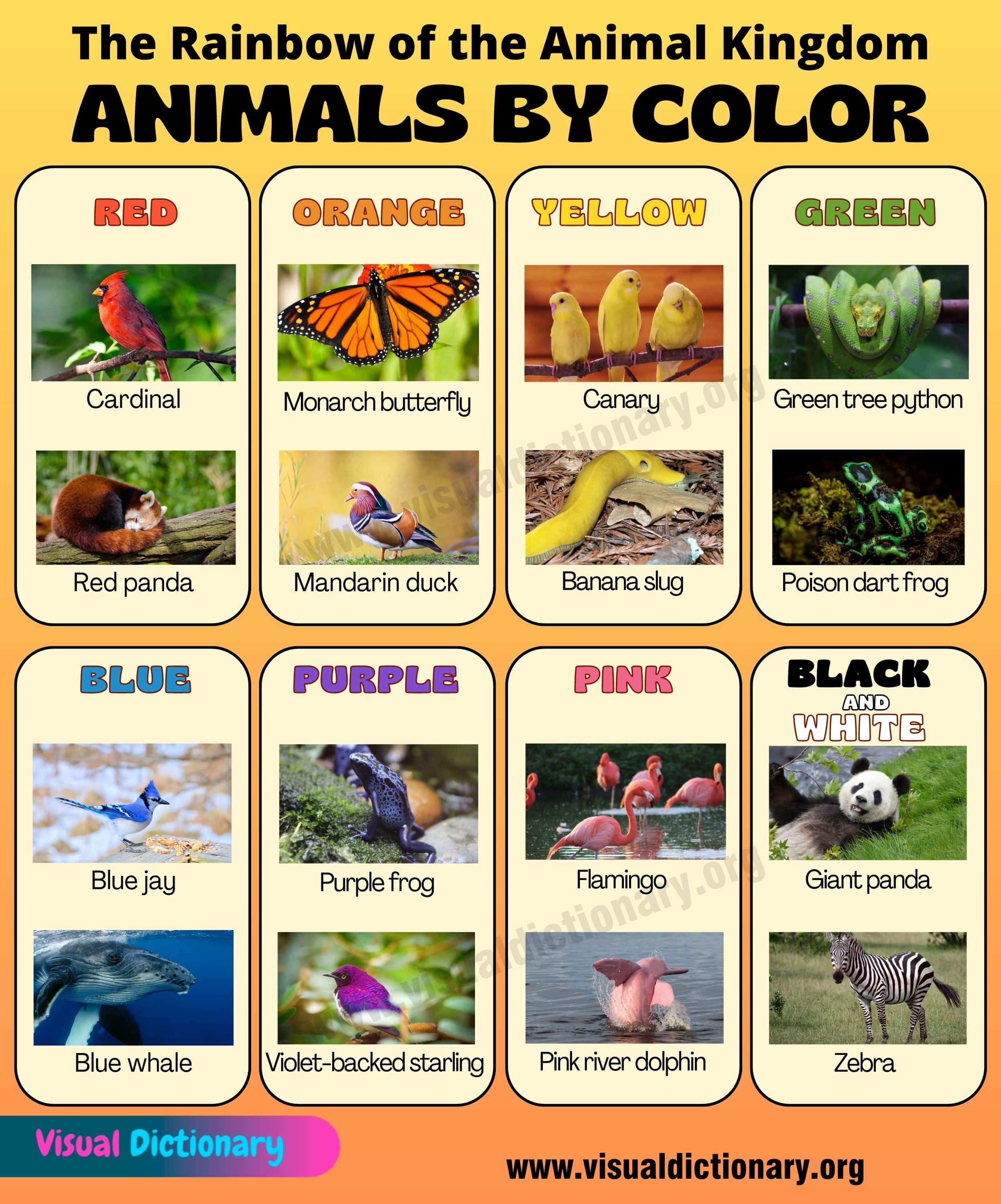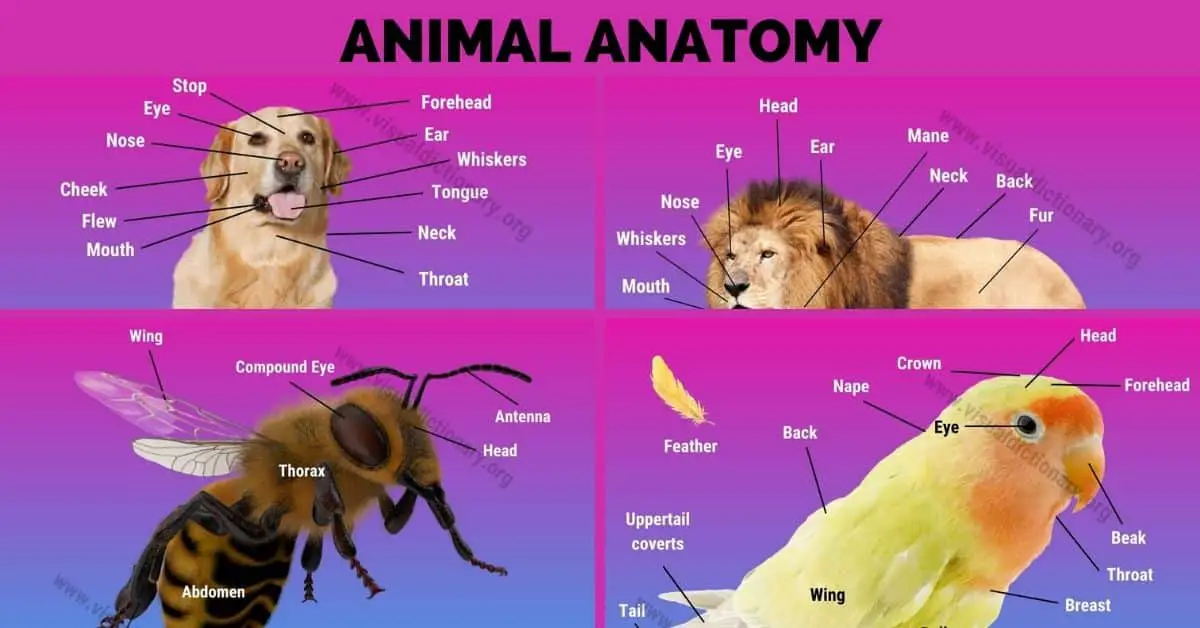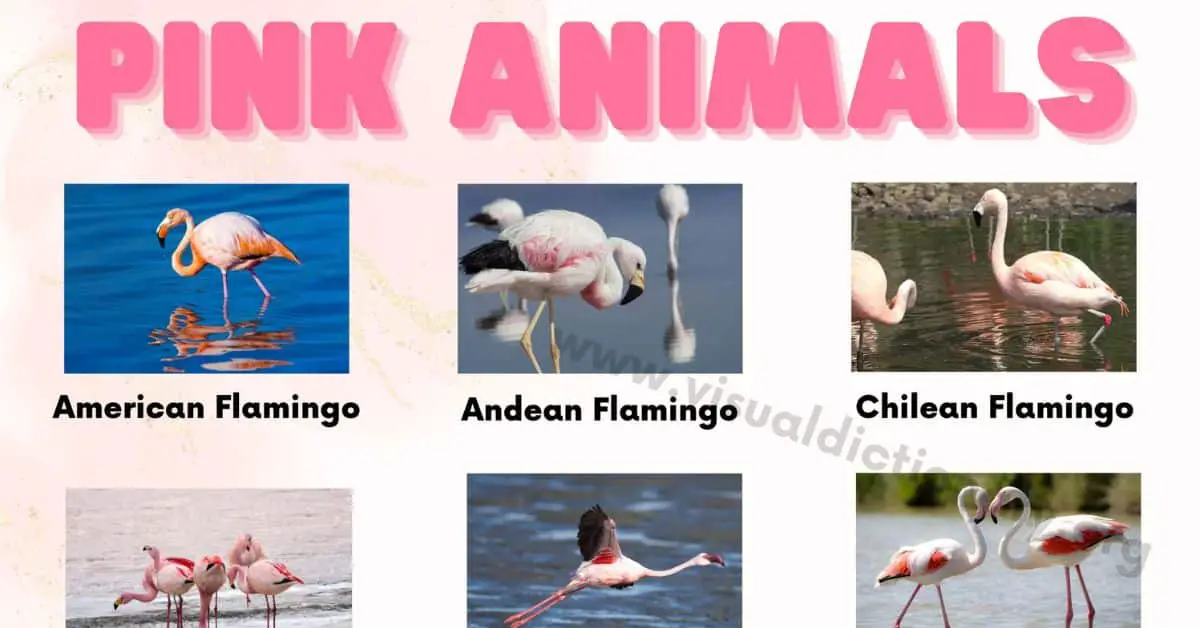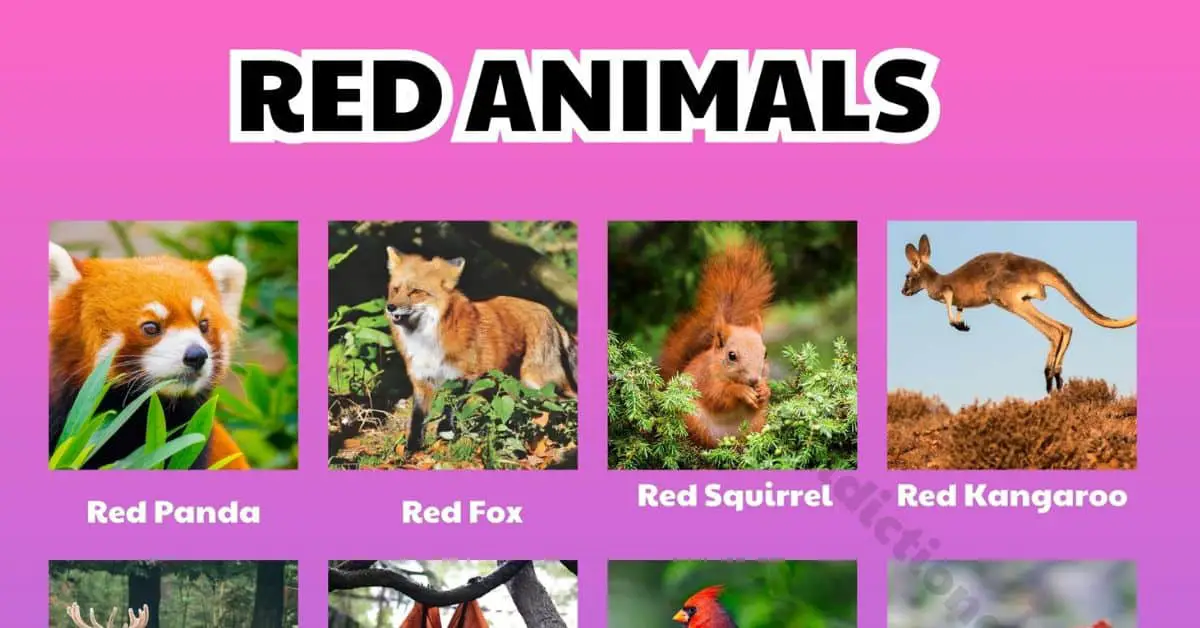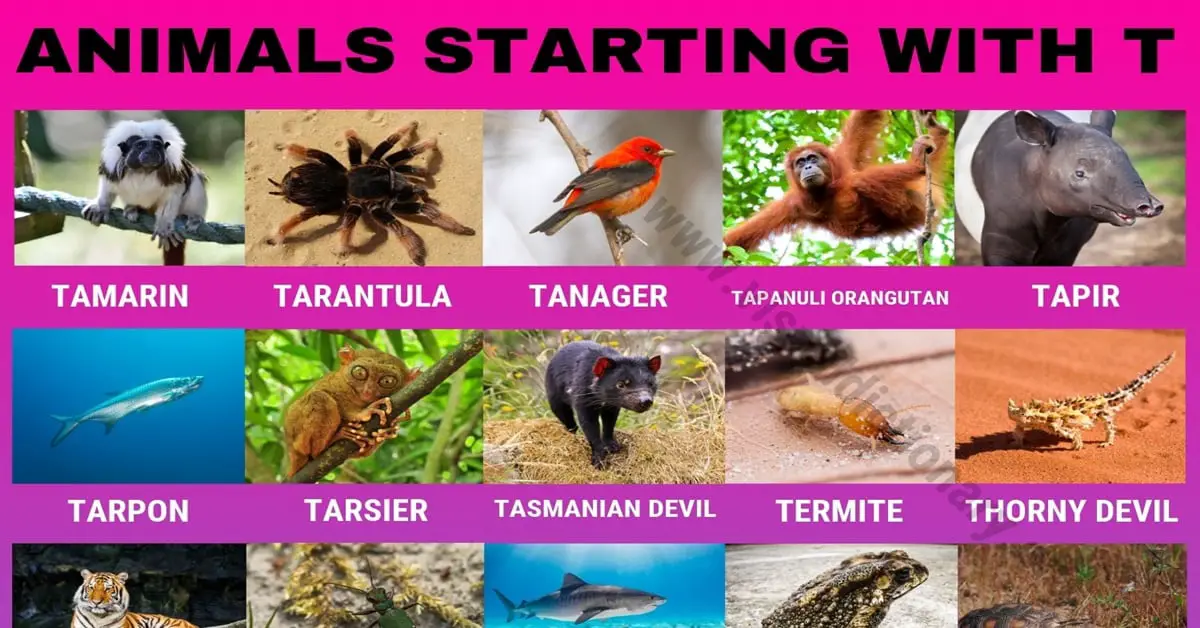Animals come in all shapes, sizes, and colors. From the vibrant blue of a peacock to the striking orange of a tiger, the animal kingdom is full of creatures with unique and beautiful colors. Animals by color is a fascinating topic that explores the different shades and hues found in the natural world.
In this article, we will delve into the world of animals by color. We will take a closer look at the different categories of animals based on their color, including mammals, birds, fish, reptiles, and insects. We will explore the reasons why some animals have evolved to have certain colors and how these colors help them survive in their natural habitats. Additionally, we will showcase some of the most colorful animals found around the globe, from the deep blue of a blue whale to the bright red of a cardinal.
Whether you are a nature enthusiast or simply curious about the animal world, animals by color is a fascinating topic that is sure to captivate your interest. Join us as we take a closer look at the diverse and colorful world of animals.
Table of Contents
Animals by Color
Animals come in a wide variety of colors and patterns. Some animals have monochrome colors, while others have bicolor or multicolor patterns. In this section, we will explore the different color variations in animals.
Animals with Monochrome Colors
Monochrome animals are those that have only one color. These animals are usually either black, white or gray. Some examples of monochrome animals include:
- Polar bears
- Penguins
- Elephants
- Gorillas
- Zebras
These animals have evolved to have monochrome colors as a form of camouflage. Polar bears, for instance, have white fur to blend in with the snow and ice in the Arctic. Gorillas, on the other hand, have black fur to blend in with the shadows of the forest.
Animals with Bicolor Patterns
Bicolor animals are those that have two distinct colors. These animals usually have a base color and a contrasting color. Some examples of bicolor animals include:
- Skunks
- Pandas
- Magpies
- Killer whales
- Clownfish
These animals use their bicolor patterns as a form of warning or camouflage. Skunks, for instance, use their black and white stripes to warn predators that they are dangerous. Pandas, on the other hand, use their black and white fur to blend in with the shadows of the forest.
Animals with Multicolor Patterns
Multicolor animals are those that have more than two colors. These animals usually have a base color and several contrasting colors. Some examples of multicolor animals include:
- Butterflies
- Parrots
- Peacocks
- Snakes
- Chameleons
These animals use their multicolor patterns as a form of communication or camouflage. Butterflies, for instance, use their bright colors to attract mates and warn predators that they are poisonous. Chameleons, on the other hand, use their multicolor skin to blend in with their surroundings and avoid predators.
In conclusion, animals come in a wide variety of colors and patterns. Some animals have monochrome colors, while others have bicolor or multicolor patterns. These colors and patterns have evolved as a form of communication, warning or camouflage.
Significance of Color in Animals
Animals use color for various purposes, such as camouflage, attracting mates, and warning predators. Understanding the significance of color in animals can provide insight into their behavior and survival strategies.
Camouflage
Camouflage is a common strategy used by animals to blend in with their surroundings and avoid being detected by predators. Some animals, such as chameleons and octopuses, can change their color to match their environment. Other animals, such as the Arctic hare and the snow leopard, have white fur that helps them blend in with the snow.
Attracting Mates
Color can also play a role in attracting mates. Male animals, such as peacocks and birds of paradise, often have bright and colorful feathers to attract females. Female animals, on the other hand, may have more subdued colors to avoid attracting unwanted attention from predators.
Warning Predators
Some animals use color to warn predators that they are poisonous or dangerous. This is known as aposematism. For example, many species of frogs and insects have bright colors to signal to predators that they are toxic and should not be eaten. Other animals, such as skunks and porcupines, have bold markings that warn predators of their defensive capabilities.
Understanding the significance of color in animals can provide valuable insights into their behavior and survival strategies. By using color to blend in with their surroundings, attract mates, or warn predators, animals are able to increase their chances of survival in the wild.
Color Changes in Animals
Animals come in a variety of colors, and some can even change their color. There are several reasons why animals may change color, including seasonal changes, age-related changes, and health-induced changes.
Seasonal Changes
More than 20 species of birds and mammals in the northern hemisphere undergo total color transformations from brown to white between summer and winter. As days shorten in autumn and lengthen again in spring, these animals get hormonal signals that trigger the turnover of fur or feathers. This change in color allows them to blend in with their surroundings and avoid predators.
Age-Related Changes
Some animals may change their color as they age. For example, many species of fish become more vibrant in color as they mature. This change in color can help attract mates and establish dominance over other fish in their environment.
Health-Induced Changes
Changes in an animal’s color can also be a sign of underlying health issues. For example, a bird with yellow feathers may indicate a liver problem, while a fish with pale coloring may indicate anemia. It is essential to monitor an animal’s color and behavior to detect any potential health issues early.
In conclusion, color changes in animals can occur for various reasons, including seasonal changes, age-related changes, and health-induced changes. Understanding these changes can help us better understand the behavior and health of animals in their natural habitats.
List of Animals by Color
Green Animals
Green animals are a fascinating group of creatures that come in a variety of shapes and sizes. Some animals are green because of the pigments in their skin or feathers, while others have green patterns or markings that help camouflage them in their environment.
- Green lacewing
- Green mantis
- Green tree python
- Grasshopper
- Luna moth
- Green stink bug
- Leaf bird
- Tree frog
- Green toad
- Green lizard
Learn more: Green Animals
Yellow Animals
- Asian golden weaver
- Banana slug
- Burmese python
- Butterflyfish
- Deathstalker
- Electric yellow cichlid
- Eyelash viper
- Goldenrod crab spider
- Honey bee
- Northern yellow bat
- Pacific sea nettle
- Yellow seahorse
Discover more: Yellow Animals
Orange Animals
- Japanese spider crab
- Corn snake
- Monarch butterfly
- Milkweed Assassin bug
- Bengal tiger
- Clownfish
- Orange starfish
- Orange tamarin monkey
- Guianan cock-of-the-rock
- Orangutan
Study more: Orange Animals
Blue Animals
- Betta fish
- Blue bottle fly
- Blue crayfish
- Blue dasher
- Blue scorpion
- Blue whale
- Chesapeake blue crab
- Little blue heron
- Moor frog
- Spix’s macaw
- Peacock
- Blue tang
Find out more: Blue Animals
Colorful Animals
There are many colorful animals in the world. Here are some examples:
- Mandarin Duck
- Rainbow Lorikeet
- Poison Dart Frog
- Blue Morpho Butterfly
- Scarlet Macaw
- Mandarin Fish
- Peacock
- Mandarin Duck
- Mandarin Fish
- Mandarin Goby
- Mandarin Wrasse
- Rainbow Trout
- Mandarin Dragonet
- Harlequin Shrimp
- Mandarin Shrimp
Discover more: Colorful Animals
Black and White Animals
Black and white animals are those that have contrasting black and white coloration. Here are some examples of black and white animals:
- Giant Panda
- Zebra
- Orca (Killer Whale)
- Dalmatian Dog
- Magpie
- Penguin
- Skunk
- Holstein Cow
- Osprey
- Badger
- Humpback Whale
- Arctic Fox
- Puffin
- Pied Tamarin
- Saddleback Tamarin
Study more: Black and White Animals
Purple Animals
Purple animals are quite rare in nature, but here are some examples of animals that have purple hues:
- Purple Starling
- Purple Finch
- Purple Honeycreeper
- Purple Emperor Butterfly
- Purple Frog
- Purple Martin
- Purple Gallinule
- Purple Sea Urchin
- Purple Octopus
- Purple Snail
- Purple Crab
- Purple Lobster
- Purple Sea Slug
- Purple Anemone
- Purple Coral
Find out more: Purple Animals
Red Animals
Red animals are those that have a red or reddish-brown coloration. Here are some examples of red animals:
- Red Panda
- Red Fox
- Red Squirrel
- Red Kangaroo
- Scarlet Macaw
- Red-tailed Hawk
- Red Deer
- Red-breasted Nuthatch
- Red-shouldered Cuckoo
- Red-backed Shrike
- Red-legged Partridge
- Red-billed Oxpecker
- Red-headed Woodpecker
- Red-billed Leiothrix
- Red-crowned Crane
Learn more: Red Animals
Pink Animals
Pink animals are quite rare in nature, but here are some examples of animals that have pink hues:
- Flamingo
- Pink River Dolphin
- Pink Fairy Armadillo
- Pink Robin
- Pink Pigeon
- Pink Katydid
- Pink Sea Anemone
- Pink Sea Star
- Pink Orchid Mantis
- Pink Grasshopper
- Pink Slug
- Pink Tongue Skink
- Pinktoe Tarantula
- Pink Butterfly
- Pink Sea Urchin
Explore more: Pink Animals
Melanistic Animals
Melanistic animals are those that have an increased amount of black or dark pigmentation in their skin, fur, or feathers. Here are some examples of melanistic animals:
- Black Panther
- Melanistic Jaguar
- Melanistic Leopard
- Melanistic Tiger
- Melanistic Zebra
- Melanistic Giraffe
- Melanistic Squirrel
- Melanistic Fox
- Melanistic Deer
- Melanistic Peacock
Explore more: Melanistic Animals
Albino Animals
Albino animals are those that lack melanin, the pigment that gives color to their skin, fur, or feathers. Here are some examples of albino animals:
- Albino Alligator
- Albino Gorilla
- Albino Deer
- Albino Kangaroo
- Albino Peacock
- Albino Squirrel
- Albino Skunk
- Albino Hedgehog
- Albino Penguin
- Albino Python
Learn more: Albino Animals
Frequently Asked Questions on Animals by Color
What animals are black and white?
Some animals that are black and white include pandas, zebras, skunks, and orcas.
What animals are red?
Some animals that are red include foxes, red pandas, cardinals, and some species of monkeys.
What animals are blue?
Some animals that are blue include blue jays, blue morpho butterflies, and some species of fish such as the blue tang.
What animals are green?
Some animals that are green include frogs, iguanas, parrots, and some species of snakes.
What animals are yellow?
Some animals that are yellow include canaries, yellow jackets, some species of snakes, and some species of birds such as the yellow warbler.
What animals are orange?
Some animals that are orange include tigers, orangutans, monarch butterflies, and some species of fish such as the clownfish.
What animals are purple?
Some animals that are purple include some species of sea urchins, some species of starfish, and some species of birds such as the purple martin.
What animals are brown?
Some animals that are brown include bears, deer, horses, and some species of birds such as the brown thrasher.

